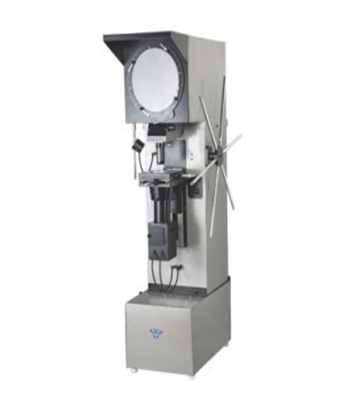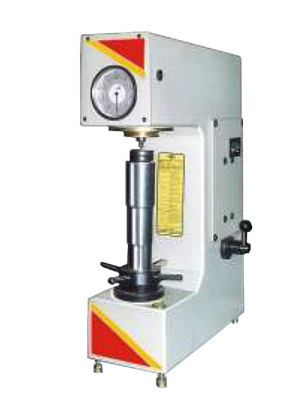
Toolmakers Microscope
Description
A hollow base, which accommodates the illumination unit underneath
A circular stage surface (upper part of the base) - It is made of transparent glass and can be rotated 360 degree
An objective lens
Eyepiece
Two micrometer screws (One for longitudinal movement and the other for lateral movement of the stage surface/table)
Ground glass screen

Profile Projector
DESCRIPTION
Profile Projector suitable for all types of measurement & inspections at industries and engineering institutes.
Its multilayer coated projection Objectives provide high transmission & optimum contrast suitable for contour & surface images.
The equipment ensures high accuracy in dimensional measurements and surface inspections.
Its unique rigid pedestal system facilitates vibration free handling of components.
Wide choice of accessories enhances the scope of applications in various fields.

Autocollimator
Description
Autocollimator is a Precise Instrument for small angular tilt measurements. Micro-Optic Visual Autocollimator-resolution ranging from 3 arc secs to 0.5 arc secs for Straightness, Squareness, Flatness , Rotary table calibration in Machine Tool Industry. Wide range of Stands and accessories are offered to suit various applications. Autocollimator with camera attachment available with software for Straightness & Flatness or machine Geometry measurements.

Vickers Hardness Tester
Features :
Testing range is very wide, from soft metal such as lead, upto the hardest, like hardeness steel.
Same hardness number is obtained on the same specimen, regardless of the load applied.
The indication is tiny and allows testing of a precision finished part.
Loading and unloading cycle is motorised.
Thin sheet metal is perfectly tested because the load applied is very small.
Built-in projection screen to get accurate results.

Rockwell Hardness Tester
Description
Rockwell & Rockwell Superficial tests consists of forcing an indentor (Diamond or Ball) into the surface of a test piece in two steps i.e. first with preliminary test force and thereafter with additional test force and then measuring depth of indentation after removal of additional test force (Remaining preliminary test force active) for measurement of hardness value.
